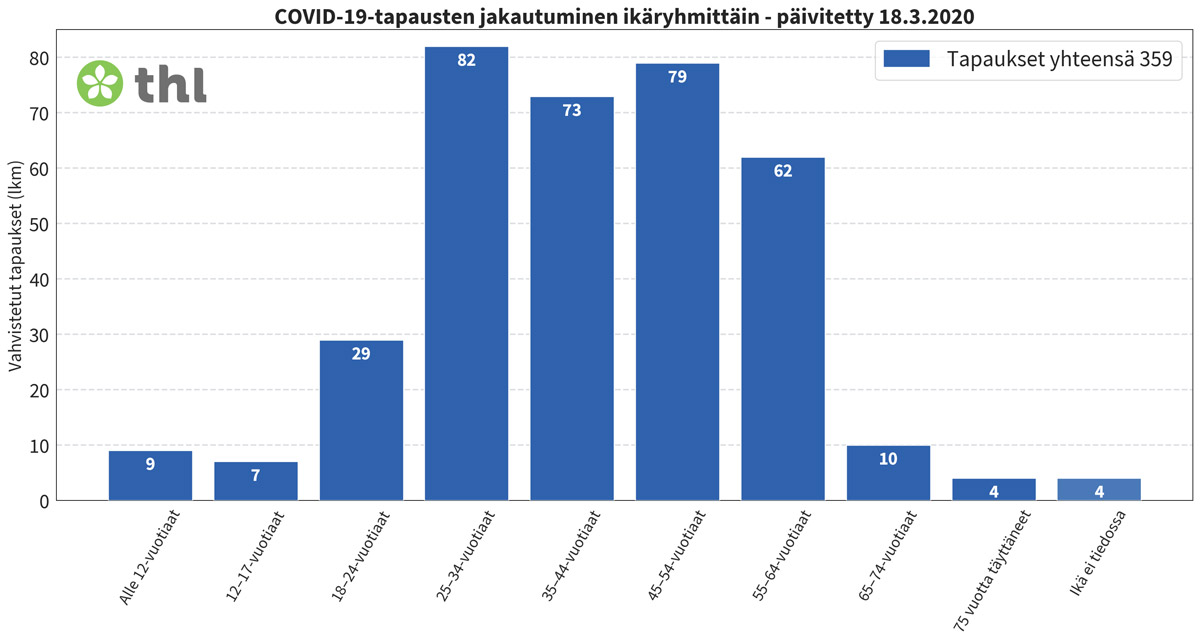The number of coronavirus cases (koronavirus, in Finnish) reported by health authorities is growing in Finland, but at a slower rate than in other countries.
According to the Finnish National Institute for Health and Welfare (THL), until Wednesday, 359 laboratory confirmed cases have been diagnosed throughout the country, most of them in the capital area, and no deaths have yet been reported. Finnish authorities found the first Covid-19 case on 29 January in Lapland.
The number of people reported as infected is only 40 more than the previous day. In Finland there has not yet been a sudden increase in infections. And the incidence of the disease remains at considerably low levels, in view of what is happening in other countries. However, the reasons can be found in the change in criteria when carrying out the tests, in addition to the age and socioeconomic status of people who have been infected so far.
Few tests carried out
As THL informed in its website, the Finnish authorities recently changed the Covid-19 sampling criteria. Now, when an infection is suspected, people are requested to stay at home isolated and samples are "primarily taken from patients with severe respiratory symptoms," emphasizes the Finnish health agency.
People who have mild symptoms and those returning from abroad will be tested only if a physician considers it necessary. Obviously, this way of coping with the disease leaves out of the count many people who may be infected but probably will never know it, unless they become seriously ill.
THL justifies this strategy by stating that "other Nordic countries, including the Netherlands and the United Kingdom, have also adopted a similar sampling strategy." However, two days ago the World Health Organization (WHO) recommended governments to do exactly the opposite, to test as much people as possible, even if they just show mild symptoms.
 Source: Finnish National Institute for Health and Welfare (THL).
Source: Finnish National Institute for Health and Welfare (THL).
The age and wealth
Another noteworthy aspect of the epidemic in Finland is that the infected people are, above all, middle-aged men and women. The vast majority of those who have tested positive (234 people) are between 25 and 54 years old. Ages in which the chances of suffering chronic diseases that can be complicated by the virus are less. In Europe, especially those who are over 70 years old are dying.
That possibly explains why no deaths have occurred to date in Finland and why the first cases detected -several weeks after the disease hit Italy hard and more than a month after the crisis in China- were mostly healthy young people returning from their vacation in Italy, in the Austrian Tyrol and in other epidemic areas. It is a fact that many of them were winter-tourists returning home. And this also says something about their socioeconomic status.
So far, in Finland the patients structure has been very different than elsewhere because the virus has been suffered primarily by the young, the healthy and the wealthy.
This situation could change very quickly if the disease spreads, for example, to elderly homes, as has happened for example in Italy and Spain, or to the poorest neighbourhoods of the capital region or to the areas where more migrants live.
At Foreigner.fi we receive daily messages and comments from migrants who have difficulties accessing health services, for various reasons. Despite the health emergency, some of them claim they are not even covered by Kela, the Finnish Social Security Institution.
State of emergency
After a week of doubts, the government has reacted and declared a state of emergency, which includes closing borders for people, closing schools, and banning public meetings and events.
The evolution of the epidemic in the coming days will tell if the reaction has come in time to prevent Finland from suffering the disasters that have occurred in other countries.










